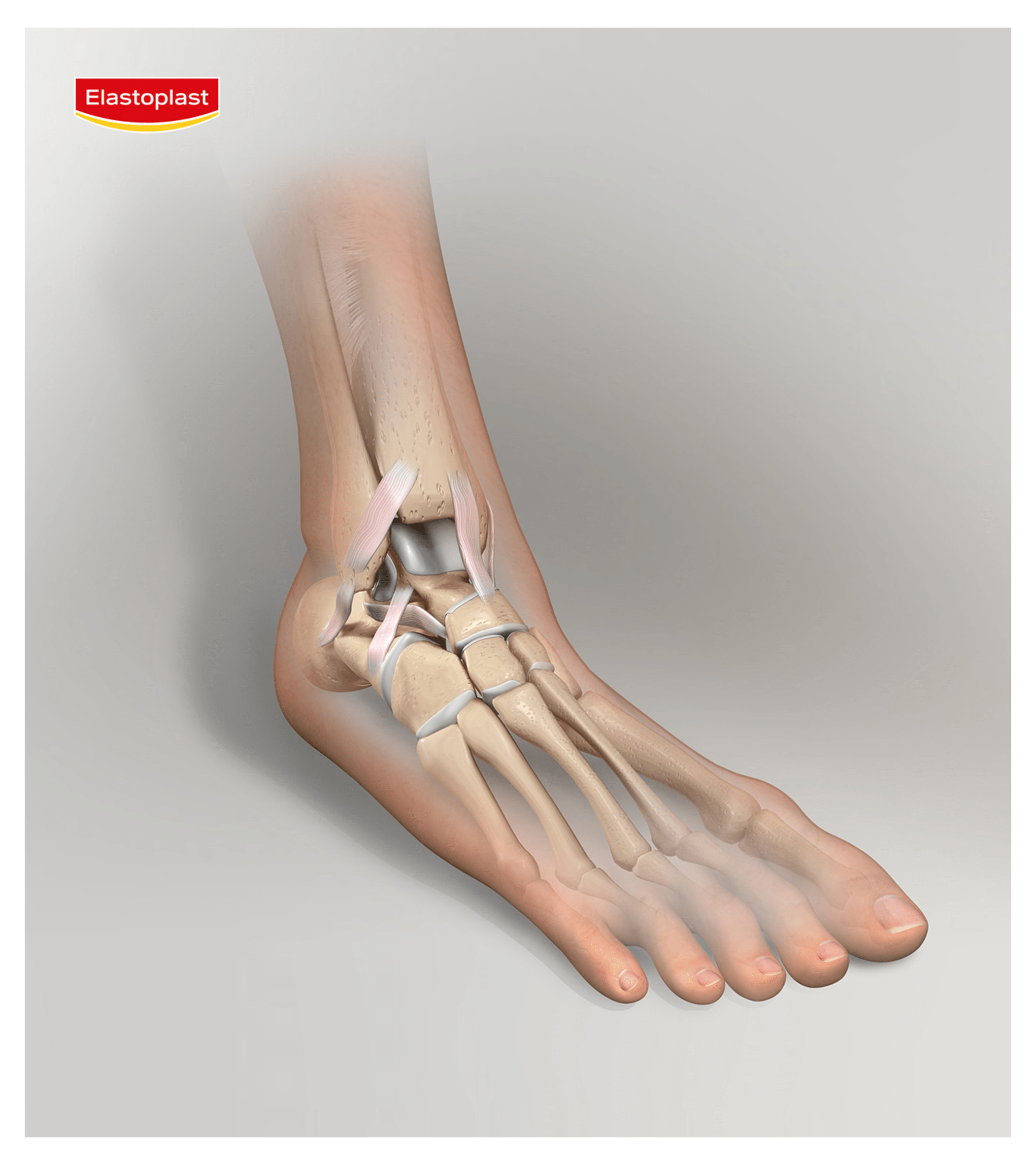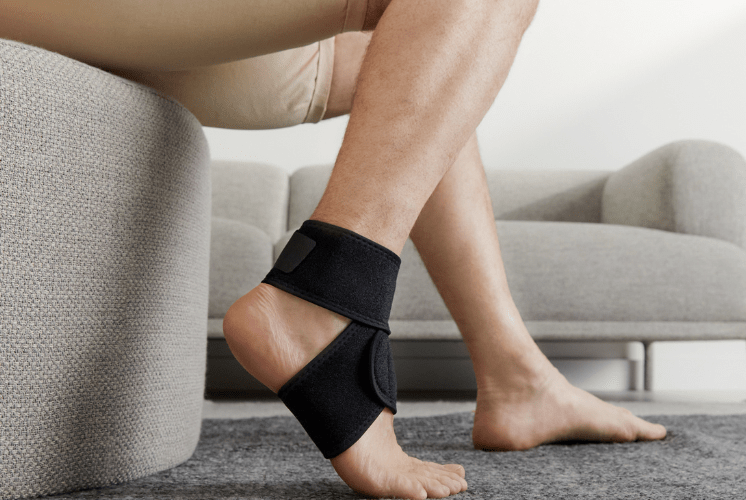Dislocation of the ankle can occur in many instances and is an injury which typically requires immediate medical attention once it has occurred to determine the severity of the injury.
In this article, we will explain the anatomy of the ankle, how an ankle dislocation occurs, the symptoms, and how it is diagnosed.
What is a dislocated ankle?

A dislocated ankle occurs when there is an abnormal separation between the bones of a joint, called the talo-tibial joint. The ankle joint is made up of 3 bones that make up the joint, which are:
- The shinbone (also known as the tibia)
- A bone in your foot (also known as the talus)
- And the smaller bone in your leg (known as the fibula)
The ankle joint is vital in allowing your foot to move up and down, as well as side to side. Therefore, a dislocation of the ankle completely impairs the ability to walk properly.
Dislocated ankle symptoms
This is a severe injury that causes immense ankle pain and requires immediate medical attention. Signs and symptoms of a dislocated ankle may include:
- Inability to put weight on your foot or move your ankle
- A bone that protrudes the skin
- Soreness to the touch
- Immediate and severe pain
- Swelling and/or bruising (typically appears immediately after)
- Obvious deformity to the ankle joint
- Numbness and tingling of the foot (depending on whether the nerves are damaged or inflamed in the ankle joint)
Possible complications from a dislocated ankle
You may experience complications from your ankle dislocation, depending on the severity of the injury, such as:
- Infection
- Delayed wound healing after surgery
- Blood clot
- Blood vessel or nerve damage from the dislocation
- Ankle arthritis
- Stiffness in the joint
- A broken bone that does not heal properly, which could lead to a follow-up surgery
The risk of complications after an ankle dislocation will depend on your general health. Reducing the risk of complications is especially important after treatment, and any instructions from your doctor should be followed meticulously to avoid any problems later down the line with the recovery process.
Dislocated ankle causes
Ankle dislocations are the result of severe injury. Typically, it does not occur spontaneously but is a result of trauma, which then causes the bones to fracture or the ligaments in the ankle to tear, resulting in a dislocation of the ankle.
Common causes include:
- Sports injuries, due to the nature of the ankle joint being in constant movement in different directions in certain sports
- Falls on the ankle
- Previous dislocation of the ankle weakening the joint
- Repeated injury to the ankle e.g. previous ankle sprains
- Motor vehicle accidents
Dislocated ankle treatment

Dislocated ankle treatment can include various options to treat the injury, and the treatment may vary depending on the severity. An orthopaedic doctor is usually best placed to treat and diagnose a dislocated ankle, so you should seek medical advice.
Some possible treatment options include:
- Anti-inflammatory medicines
- A splint to hold the ankle in place initially
- Orthopaedic aids such as a cast or boot to hold your ankle after swelling has reduced significantly
- Emergency surgery in some cases
- Use of cold and heat therapy
- Keeping the ankle elevated
- Physiotherapy
Supporting a dislocated ankle after surgery
Surgery is usually needed to treat the injury due to the complexity of the dislocation. After surgery, you may be given a removable brace or splint to ensure the ankle is locked into place to allow for healing. Physiotherapy will also be essential to ensure a full recovery, as the joint will need to be rehabilitated with load gradually over a period of time.
The Elastoplast Protective Ankle Support offers protection and relief to the ankle after a variety of injuries including ankle dislocation, broken ankles, and weak ankles to prevent further injury. The ankle support is made with Thermo-Tech material that provides warmth to support circulation and recovery, Dynamic Pressure Adjustment that reduces overstraining to relieve pain and 360° Support Technology that provides wraparound support and stability to the ankle.
Elastoplast Performance Ankle Support is another ankle support which is designed for those that are in recovery from an ankle injury and need protection, stability and flexibility during recovery. Learn how to put on an ankle support here.
Recovery time for a dislocated ankle
After completing the treatment, rehabilitation of a dislocated ankle can take anywhere between six and 12 weeks before an individual can return to their pre-injury activities.
Recovery from such an injury requires frequent check-ups with your doctor and physiotherapist to ensure you are on track.
Will a dislocated ankle heal on its own?
A dislocated ankle is a medical emergency, and most ankle dislocations require surgical intervention. Therefore, it is highly unlikely that an ankle dislocation will heal on its own without medical assistance and treatment.
Diagnosing a dislocated ankle
To diagnose a dislocated ankle, a medical professional will typically need to assess the injury directly but also consider the medical history of the patient, whether the injury has occurred before and how the injury occurred.
Physical examination of an ankle from a doctor may include:
- Identifying the tibia, fibula and talus to assess the relationship between the bones in the ankle
- Examining the structures and foundations of the foot and ankle
- Testing pulses and sensation in the foot
This is done to determine if any other injuries could be associated with the dislocated ankle. Nerves and blood vessels can become stretched and damaged when the ankle dislocates so testing sensations in the foot are important for initial assessment.
For further analysis and diagnosis of the ankle joint after dislocation, diagnostic tests may be carried out. These include:
- X-rays
- CT and MRI scans (to identify any hidden fractures and examine the condition of the ligaments and tendons in the ankle joint)
These tests are carried out to determine several things before confirming the injury, such as assessing the extent of the damage, whether a bone fracture or break is present and where the bones are in the ankle (they may need re-alignments).






